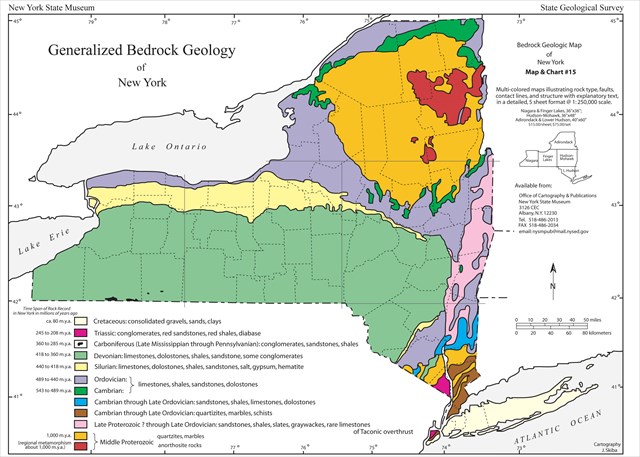This EarthCache serves two purposes:
Measuring Geologic Time
In geology, time is “measured” in two primary ways; relative time and absolute time.
Absolute time is where a mineral or rock layer is actually dated - given an age in years before present time - e.g.: 3.4 million years.
Relative time is dating methodology where one layer of rock is assigned an age that is either younger or older than another layer. In this method there is not specific number of years, therefore it is “relative” to the rock surrounding it.
Here is an easy way to think about relative time that was provided by the Earthcache Academy:
“...imagine that you get the local newspaper every day, and each morning when you are done reading that day’s paper, you neatly fold it and drop it into the recycling bin. By the end of the week, you have a sequence of papers where the oldest is on the bottom and the youngest is on the top. Similarly, in a sequence of horizontal sedimentary rocks that apparently have not been overturned, the oldest rock layer (strata) is on the bottom and the youngest is on the top.”
The Geology of Letchworth State Park
400 million years of geologic history can be seen in the walls of the gorge at Letchworth State Park and are from the Devonian Age. The rocks in the gorge are sedimentary. Sedimentary rocks are formed from particles of sand, shells, pebbles, and other fragments of material. Gradually, the sediments accumulate and over time and harden into rock. Sedimentary rocks are, in general, are fairly soft and can crumble easily. The rock in the gorge is mostly shales with some limestone and sandstone. Some layers of rock have a red color to them. This red coloring is due to iron oxide in the rocks from being deposited during a high oxidizing environment.

From the posted coordinates, you can look across the river to see the exposed rock in the gorge wall. These rocks, along with this cache page, will be where you can find the answers to the required questions for this earthcache.
To log this Earthcache you must email me the answers to the following questions. Do not post the answers in your log. If you post the answers in your log entry, it will be deleted. Use the cache page and your observations to help you answer the questions.
- What are two types of rock that can be found in the gorge walls?
- How many distinct layers of rock do you see in the wall across the gorge?
- Pick a specific band of rock that you can see in the gorge wall. Describe this layer including its color and approximate thickness. I know it is hard to gauge thickness from this distance, but just make your best guess.
- For the band you chose, is the layer above it older or younger?
- What causes the red coloring in some layers of the rock?
Although not required, please feel free to post a picture of you/your group in your log entry.
REMINDER: If I do not receive an email from you within 7 days with the answers to the logging requirements, your log will be deleted.
Thank you to LANMonkey for his help with this earthcache! And to Roland Beck, Park Manager for his permission for this earthcache and his continued support of the geocaching community in the area.
| I have earned GSA's highest level: |
 |

REFERENCES:
"EarthCache Academy." EarthCache Academy. N.p., n.d. Web. 03 Oct. 2016. .
"Letchworth State Park." Wikipedia. Wikimedia Foundation, n.d. Web. 03 Oct. 2016.
North East Geology. N.p., n.d. Web. .
Zimmerman, Sarah. "Letchworth State Park." St. Lawrence University Geology Club. N.p., 24 Apr. 1997. Web. 03 Oct. 2016.